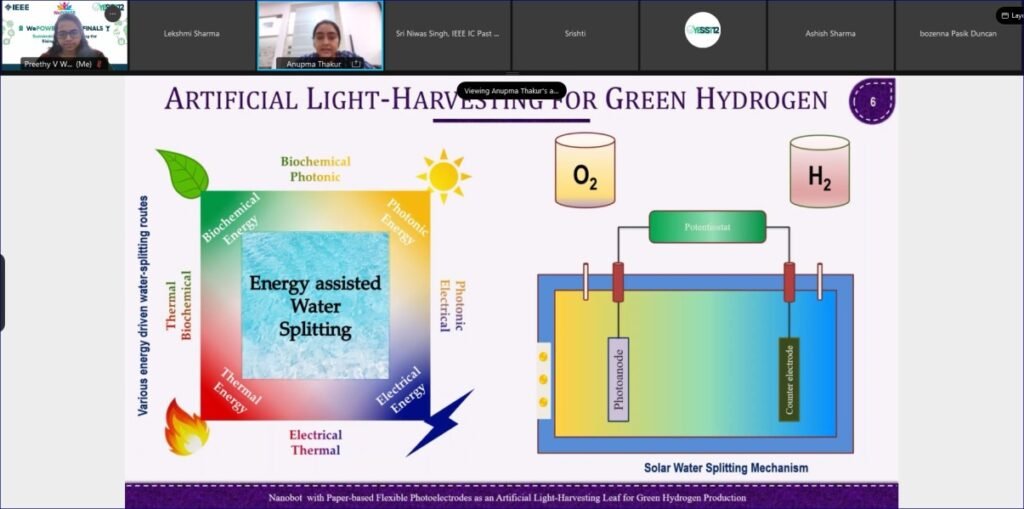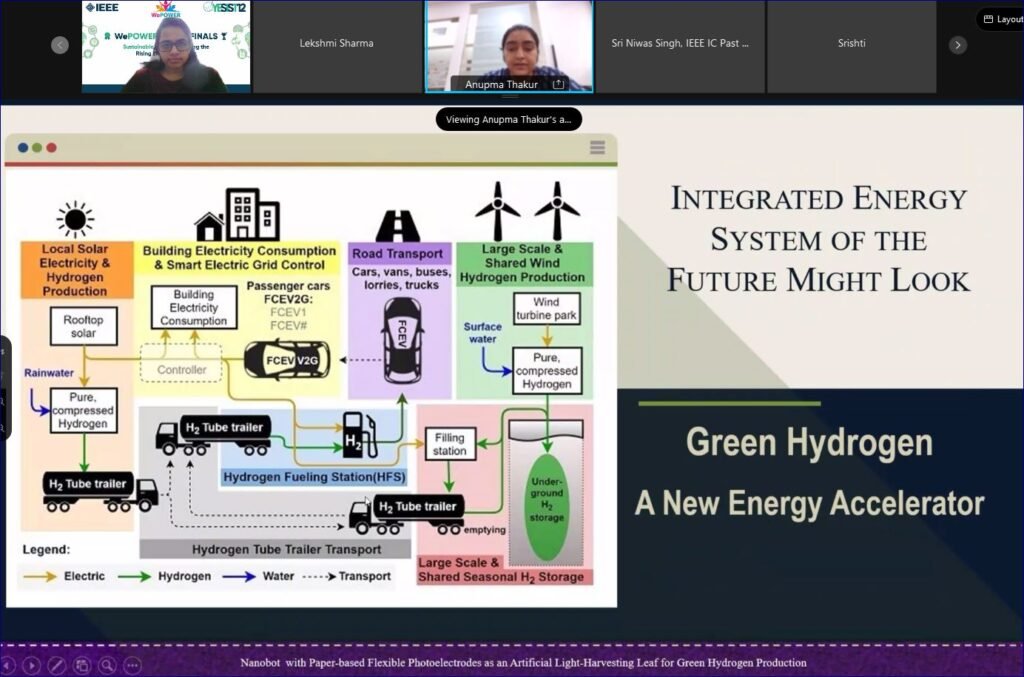IEEE YESIST 12 2021 - WePOWER Track Runner Up
Nanobot with Paper-based Flexible Photoelectrodes as an Artificial Light-Harvesting Leaf for Green Hydrogen Production
-
Team Name
Green H2
-
Project Name
Nanobot with Paper-based Flexible Photoelectrodes as an Artificial Light-Harvesting Leaf for Green Hydrogen Production
-
College Name
CSIR-CSIO
-
Country
🇮🇳
Abstract:
Energy is a factor determining a country’s economy, infrastructure, transportation, and standard of life. To supply the energy demands of the more rapidly increasing global population (>7.7 billion people worldwide), it is essential to upgrade to an alternative, sustainable energy source that does not negatively affect the environment. The hazardous effects of CO2 emissions (>500 trillion tonnes in 2019 year) from conventional fuel vehicles have caused the scientific world to move towards environmentally friendly energy sources. Though we have various renewable energy sources, the perfect one to use as a clean future energy source for automobiles is “renewable hydrogen (RH) or green H2”. Like electricity, hydrogen is an energy carrier that has the ability to deliver incredible amounts of energy with high energy density (120 MJ/kg) and 60% fuel efficiency. Hydrogen is a chemical energy carrier that has the capability to produce electricity up to 39.39 kWh/kg, which surpasses the energy density of most batteries/other fuels. Hydrogen fuel cell (HFCs) are an alternative to an internal combustion engine (ICE), which converts hydrogen i.e. chemical energy into electrical energy in an environmentally friendly process with zero CO2 emissions. Automobile manufacturers such as Honda, Toyota, TATA and Hyundai have already started to manufacture hydrogen fuel cell vehicles (H-FCVs). These vehicles have above a 300-mile driving range and can be refueled in less than 10 min at a hydrogen refueling station, which is more comparable to a traditional ICE fossil fuel powered vehicle. Yet, the cost of H-FCVs is presently higher and is competitive with ICEs based vehicles that hurdles the mass production of hydrogen and its storage. In our study, we present our research focused on the energy economy of renewable hydrogen to fulfil energy demands.
Motivated by this, we herein demonstrate polypyrrole polymer decorated laboratory filter paper (PFP) as photoanodes (PAs) which mimics the ‘natural leaf’ for artificial solar light harvesting and photoelectrochemical (PEC) water splitting. We have successfully developed efficient and stable nanoengineered photoelectrodes which act as ‘artificial leaf’ to harvest solar energy and convert it into chemical fuel i.e. hydrogen. The straddling band position with water redox and the measured band gap of PFP-PAs is ~1.88 eV, that make them effective for remarkable solar light-assisted water splitting reactions. The in-situ polymerized polypyrrole polymer coated onto filter paper (i.e. for the fabrication PFP-PAs), has spherical morphology and average particle size of the order ~15 nm as portrayed by HR-TEM. The results manifest excellent photoanodic PEC activity of these PFP-PAs, yielding a photocurrent density of ~9.5 mA/cm2 (at 1.23 V vs. RHE) under 1-sun irradiation. The incident photon-to-current efficiency (IPCE) and applied bias photon-to-current efficiency (ABPE) is measured to be 43.19% and ~10%, respectively. Moreover, the robustness of these flexible PFP-PAs is also visualized by testing their stability for more than >10 hours minutes in alkaline conditions. Now we are working on the optimization to integrate this developed photoelectrodes to design a monolithic device for renewable hydrogen production from water. The current study provides a proof-of-concept for the realization of cost-effective, flexible, and efficient nanoengineered paper-based artificial photocatalysts (like a natural leaf) for solar-driven water splitting with remarkable performance. The present study also opens up the avenue for the exploration of flexible photoelectrodes for PEC water splitting could redefine the use of papers for the hydrogen generation in fulfilling the future energy demand as an alternative clean fuel. We expect green hydrogen in H-FCVs automobile sector, power plants, and electricity generators to become prominent as a green & clean energy fuel in the coming decades.


